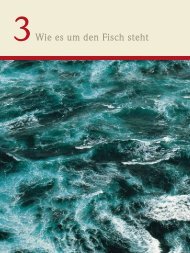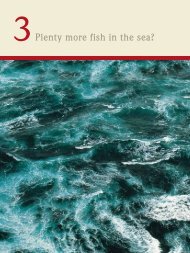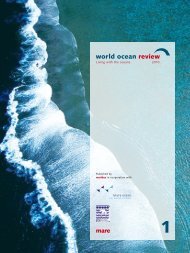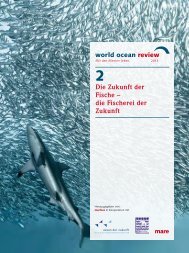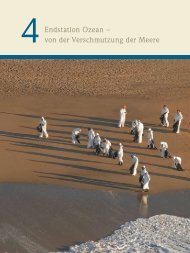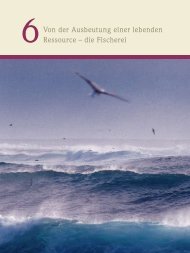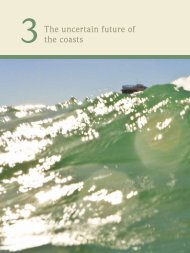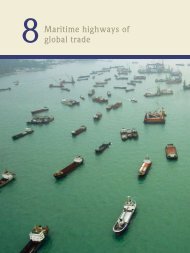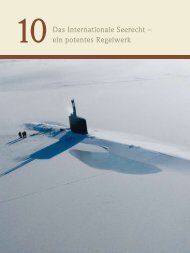Download WOR 2 PDF - World Ocean Review
Download WOR 2 PDF - World Ocean Review
Download WOR 2 PDF - World Ocean Review
Create successful ePaper yourself
Turn your PDF publications into a flip-book with our unique Google optimized e-Paper software.
44> Chapter 033.2 > Global estimationof fish abundance:Data on thestatus of fish stocks isprovided by the fisheriesand scientists.The FAO collates thisinformation and thenattempts to drawup a picture of theworldwide situation.The problem is thatreliable data existsfor only about 500stocks. Experts do notagree on the status ofother fish stocks.the tonnages and also the age and size of the fish. Datasetsfor cod off the coast of Norway, for example, go back as faras the 1920s. Very little is known about other fish speciesand maritime regions – particularly the Exclusive EconomicZones of some developing countries. Many developingcountries provide catch data alone, without any scientificassessment. The FAO makes limited use of such data.There are also some maritime regions for which not evensimple catch data is available. The FAO believes that it isimpossible to make any reliable estimation of such stocks.Therefore no reliable data exists for many of theworld’s fish stocks. Moreover, fisheries biologists areeven unable to confirm how many fish stocks there actuallyare. If any data is available, it applies only to commerciallyexploited species. Naturally an overall survey of allthe world’s fish would be desirable – but the cost wouldbe exorbitant. Hundreds of research expeditions would berequired, making the exercise unaffordable.Critics point out, therefore, that the FAO statistics donot take a large proportion of stocks into account. A jointAmerican-German research group has therefore developedits own mathematical model to estimate the status ofall populations from the catch amounts reported by thefisheries alone, without the fishery-independent data fromthe scientists. These researchers are also investigatinghow stock catches have developed over time. According tothis model, a fish stock is depleted when the catchdecreases conspicuously within a few years. Attempts arebeing made to circumvent the lack of stock calculations bysimply interpreting catches over the course of time. Theresearchers have meticulously requested informationfrom the authorities of the countries responsible forregions with no catch data at all. Based on the model,which takes 1500 commercially exploited stocks andaround 500 other stocks into account, the fish are in evenworse shape than assumed by the FAO: 56.4 per cent ofthe stocks are overexploited or depleted, not 29.9 per centas claimed by the FAO. But the work of this American-German research group is itself under fire, with claimsthat its data is inconsistent and still unreliable. It presentsa distorted picture of the reality, say other researchers.Which of the methods better illustrates the state of theFisheryFISHERYScientist travels with fishingvessel and gathers fisherydependentdata (catch volume,composition, age, size, length,fish maturity level, calculationof expended effort).RESEARCHScientists undertake their ownresearch expeditions to gatherfishery-independent data.Samples also taken in areas wherefishery is not active; sampling ofall age groups, including juveniles(using close-meshed nets).sends catch datasends fisher y-dependent datasends fishery-independent data



